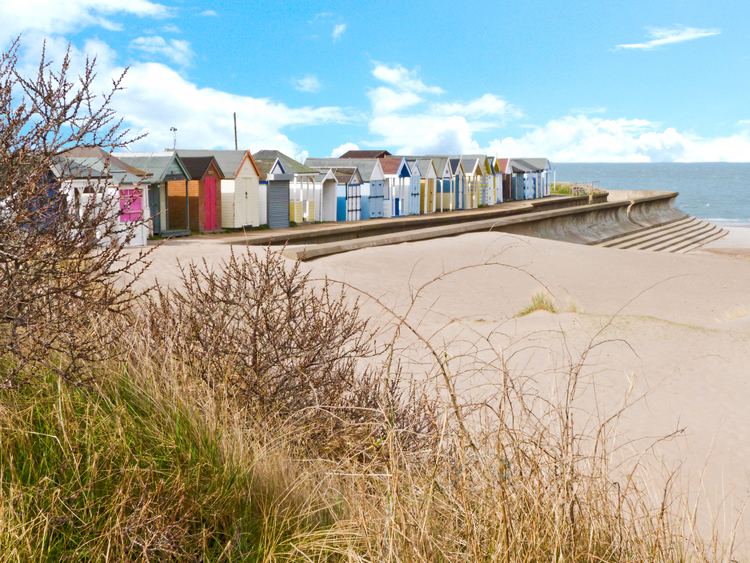Population 3,384 (2011) Sovereign state United Kingdom Local time Friday 1:04 AM Dialling code 01754 | OS grid reference TF5672 Post town SKEGNESS | |
 | ||
Weather 4°C, Wind S at 23 km/h, 88% Humidity | ||
Town centre and beach chapel st leonards lincolnshire
Chapel St. Leonards is a village and civil parish in the East Lindsey district of Lincolnshire, England. It is situated 5 miles (8 km) north from the resort of Skegness.
Contents
- Town centre and beach chapel st leonards lincolnshire
- Map of Chapel St Leonards UK
- Walking talking on chapel st leonards beach
- Governance
- Chapel and church
- References
Map of Chapel St Leonards, UK
The village is a location for caravan park holidays, is next to several miles of beach, and close to Fantasy Island, market towns, and the Lincolnshire Wolds.
A Chapel St. Leonards landmark is Chapel Point, 1 mile (1.6 km) north from the centre of the village. It is a restored part of a major Second World War coastal defence line; the restoration included the gun structure and the viewing platform. In recent years Chapel Point has become a location for birdwatchers, being visited by migrating birds such as the Mediterranean gull.
Walking talking on chapel st leonards beach
Governance
An electoral ward in the same exists. This ward stretches west to Hogsthorpe with a total population taken at the 2011 census of 4,684.
Chapel and church
The name of the village derives from a chapel at Mumby dedicated to St Leonard; the village history is tied to that of Mumby, both at one time being part of the same ecclesiastical parish.
The village Anglican church, also dedicated to St Leonard, was rebuilt in 1572 after a flood, and again rebuilt in 1794 on a smaller scale. There was further rebuilding in 1866 and in 1901 when the church was lengthened and the red-tiled tower, unique in Lincolnshire, was added. In 1924 the chapel was again enlarged and lengthened, and a new east window and reredos added. The present church holds parish registers dating from 1665, although bishop's transcripts go back as far as 1568.
